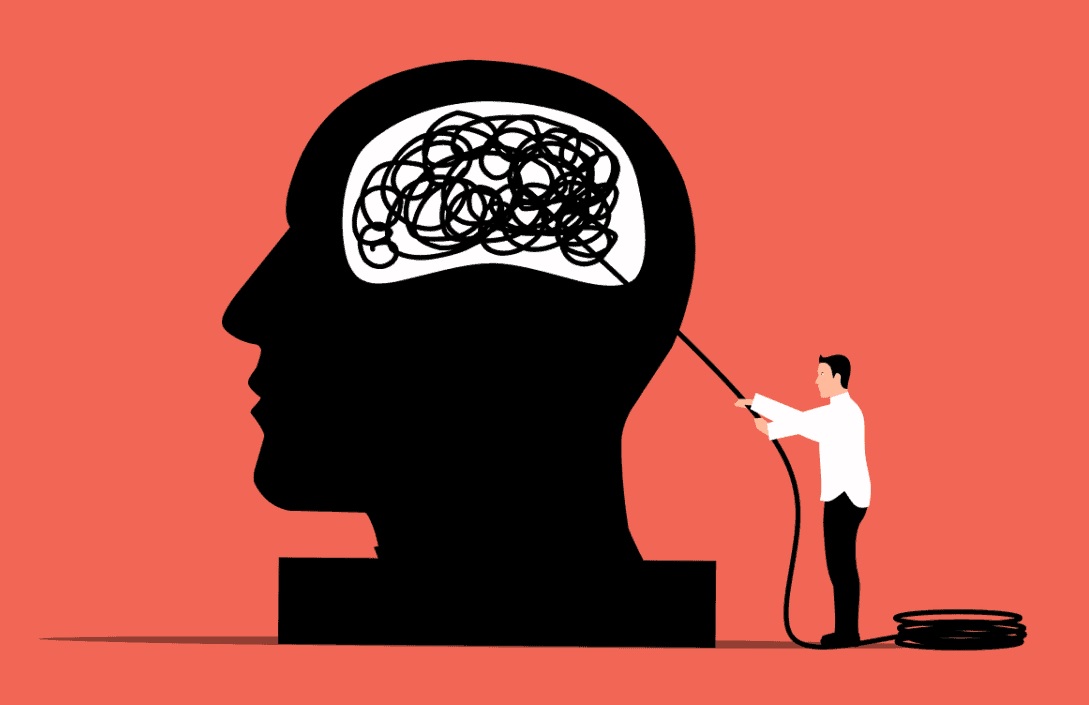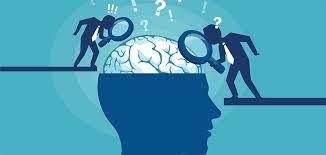EMDR Therapy
“Changing the memories that form the way we see ourselves also changes the way we view others. Therefore, our relationships, job performance, what we are willing to do or are able to resist, all move in a positive direction.”

What is EMDR?
EMDR (Eye Movement Desensitization and Reprocessing) is an evidence-based, integrative, and comprehensive psychotherapy approach that has been extensively researched and proven effective for the treatment of trauma. EMDR is a set of standardized protocols that incorporates elements from many different treatment approaches such as imaginal exposure, mindfulness, cognitive and self-control techniques into a structured treatment plan developed to meet the specific needs of each person.
According to the EMDR Association, EMDR is a “psychotherapy that enables people to heal from the symptoms and emotional distress that are the result of disturbing life experiences.” This modality was discovered by Dr. Francine Shapiro as it alleviates the distress due to traumatic memories resurfacing.
The client typically concentrates on the worst moment of a target memory while visually following the therapist’s moving fingers and/or alternating sounds or vibrations; this is repeated with different aspects of the memory until no further distress remains. The back-and-forth implementation essential to EMDR is called bilateral stimulation (BLS). The unique combination of methods in EMDR appears to stimulate an intrinsic capacity of the human brain to resolve emotional disturbance and gain adaptive insights in a manner similar to what occurs spontaneously during dreaming Rapid Eye Movement (REM) sleep.
To date, EMDR has helped millions of people of all ages relieve many types of psychological stress. EMDR has been found to be the most effective and efficient of the well-established trauma treatments.
An Introduction to EMDR Therapy from EMDRIA
The EMDRIA Foundation is organized to promote, foster, and preserve education, science, and knowledge regarding EMDR therapy and trauma-informed care. The EMDRIA Foundation promotes global healing, health, and hope by advancing knowledge, practice, and science in EMDR therapy, increasing public awareness of EMDR therapy and the impact of trauma on health and well-being. In the broadest sense, EMDR is an integrative psychotherapy approach intended to treat psychological disorders, to alleviate human suffering and to assist individuals to fulfill their potential for development, while minimizing risks of harm in its application. For the client, EMDR treatment aims to achieve comprehensive treatment safely, effectively and efficiently, while maintaining client stability. The Association’s definition of EMDR can be found here.

EMDR with Adults
EMDR is a psychotherapy approach developed to help people heal from trauma or adversities such as issues of abuse, bullying, domestic violence, grief/loss, attachment wounds, abandonment, PTSD, complex developmental trauma, perinatal mental health, and many other complicated life issues. EMDR therapy is now validated as an evidence-based approach and included in SAMHSA (the Substance Abuse and Mental Health Services Administration) and the National Registry of Evidence-based Programs and Practices. In addition, EMDR therapy has been validated by over 20 randomized controlled clinical trials.
EMDR therapy integrates elements of many traditional psychological orientations and is based on the adaptive information processing model (AIP). The AIP model hypothesizes that there is an inherent information processing system in the brain that gets blocked when traumatic or adverse events occur, causing these events to get locked in the brain with the original picture, sounds, thoughts, feelings, and body sensations. Whenever a reminder of the traumatic or adverse event comes up, those pictures, thoughts, feelings, and sensations can continue to be triggered. According to Dr. Shapiro, many emotional problems and disorders are manifestations of these unprocessed trauma memories that are stored in the brain. EMDR therapy works on helping the brain reprocess these traumatic memories, and as a result alleviating the emotional and psychological disorders. The California Evidence-Based Clearinghouse for Child Welfare has now accepted EMDR therapy as an evidence-based approach for children.
For more information on EMDR, visit EMDR Institute, EMDR International Association or EMDR-Humanitarian Assistance Programs.
“We don’t want clients to leave a session with meaning-making. We want them to leave a session better connected to the parts of themselves capable of making meaning.”


EMDR with Parents
You have in your hands the delicate and complex work of shaping another human being. Being a parent is such a privilege but it also requires a great commitment and work. If you have a child with socioemotional and/or behavioral difficulties, know that there is help and many therapeutic modalities that can assist you and your child, EMDR is just one. It is worth highlighting generational trauma has perpetual potential for continuing if not interrupted and addressed. The sense of self in any child does not develop in isolation; in fact it develops in the parent-child relationship starting within the womb; and, other important relationships early in life. We came to this world to connect with others and when these connections do not happen or they happen in a way that can injure us, our sense of self does not develop appropriately. In many cases, having the child as well as the parent receive EMDR therapy is recommended for best results. Sometimes the parent may be highly traumatized by living through the traumas of their children and the healing needs to take place in both, the child and the parent. Sometimes because of the parents’ early experiences with their own parents, they may have difficulties setting boundaries with their children (i.e., they may be overprotective, neglectful or abusive, too distant, or too intrusive). Parents’ emotional dysregulation can affect their children’s development. For instance, a parent with depression, without knowing or intending to, may neglect their child’s needs for connection and love, severing the attachment between them and their sense of security.
At LWC, it is our privilege to have so many tools and options that can facilitate healing. All of us at some point in our lives need help. We are biologically hard-wired to need others and need help from others. Do not give up! There is hope and so many ways to find healing and become whole. Remember you do not have to go through this alone. We are here for you.
“We honor the rhythm and pace of the client’s mind.”
EMDR with Children in Play Therapy
EMDR and Play Therapy is an excellent and brilliant combination for healing trauma, especially in children. It helps young people stay within their window of tolerance and allows them to communicate in different ways about their struggles, symptoms, and trauma in their own natural language, play. Engaging in Child-Centered Play Therapy for instance can help gain insight into specific Negative and Positive Cognitions a child may have relating to their trauma. You might also gain insight into specific resources that may be helpful or places there may be blocking beliefs. Play also helps you gain rapport and trust with a young person. Unlike adults, most young people do not present themselves for therapy with high levels of engagement and motivation to work through trauma. For this reason, they may need a longer period of rapport building to increase trust before going into the depths of their presenting concerns. This is especially true for complex developmental trauma as opposed to a single traumatic incident. Play therapy activities such as sand tray, art, drawing, puppetry, poetry, and other expressive activities are essential for Phases 3-8 of EMDR!
“Unstick the Ick!” When we have “yucky” things that happen to us and muck up our children’s mini minds, many mixed-up feelings and thoughts occur. We do not have space in our hearts, minds, and bodies for the good feelings and thoughts when the “yuck is stuck.” EMDR can help kids by decreasing or ridding them of their “yuck” and make space for healthier feelings and thoughts. Ana Gomez names EMDR for children as “Eyes Moving to Digest and Recover!”
When kids receive EMDR, one of the things they do is move their eyes from one side to another while they think about the yucky things that happened to them. They actually do this every night….yes kids move their eyes every night while they are asleep during their Rapid Eye Movement (REM) cycles! Ana Gomez calls this, “the eyes dancing in the night.” EMDR healers use a variety of engaging and creative ways to simulate bilateral stimulation besides having children move their eyes back and forth.
With childhood trauma, children’s brains have difficulty putting all the pieces together and as a result, things that people say or do, or things that they see, hear, smell, taste, or touch can bring up the yucky memories along with all their associated mixed-up thoughts, feelings, and bodily sensations. EMDR pieces the brain back together so the yucky stuff can leave and the good stuff we learn will stay and grow stronger.
More information on EMDR can be explored in Ana Gomez’s book: EMDR Therapy and Adjunct Approaches with Children: Complex Trauma, Attachment and Dissociation.




EMDR with Teens
- Do you feel annoyed, angry or bored often?
- Do you isolate from others?
- Do you feel that you are not as good as others are?
- Do you have nightmares or have a hard time falling asleep or staying asleep?
- Do you have negative events that happened to you? Do you tend to keep things inside and not tell anyone?
- Do you use drugs or alcohol or do you do things to harm your body to numb or escape the uncomfortable feelings? Or do you do this to fit in because you don’t feel connected to others, or you don’t feel as good as others?
Most teens and adults feel this way, and there is help for all of us! There is a way to find hope and find our positive feelings again. When we have bad or negative events in our lives like abuse, bullying, divorce, accidents, losses and death of a loved one, violence in the home among others, the brain creates ‘files’ or “apps” that contain all the feelings, thoughts, and body sensations connected to this event. When we have events that are not “too bad,” the brain has the capacity to work on these files/apps before storing them and locking them up as memories. What is stored has been sorted out and organized so the negative stuff has been let go, allowing us to keep the good stuff and learn from this experience. However, when the event is really harmful or has happened several times, these files/apps get overloaded and the brain cannot sort things out and piece the event together. As a result, these files/apps are all messy, in pieces that are disorganized by the brain. Different triggers in life can open up these files/apps, even if unwanted. A “click” may be a classmate making fun of us, being ignored, not getting what we are asking for, parents asking us to clean up our room and so on. When these “clicks” open up the files/apps, we start to have the negative feelings, thoughts, and bodily reactions similar to when the bad stuff happened. EMDR helps the brain organize these files/apps. Each new “click” throughout life will no longer have the power to make us feel angry, sad, or shameful, or to think that we are not worthy.
EMDR is not a “magic” cure. It takes work and patience; but, it is so worth it for recovery and healing. EMDR therapists know how to use EMDR for people throughout the lifespan and will guide you and further explain all the stuff that happens when we do EMDR and what we know about it in developmentally appropriate language. Do NOT do EMDR on your own, as it is can be harmful and worsen symptoms without the help of a professional.
